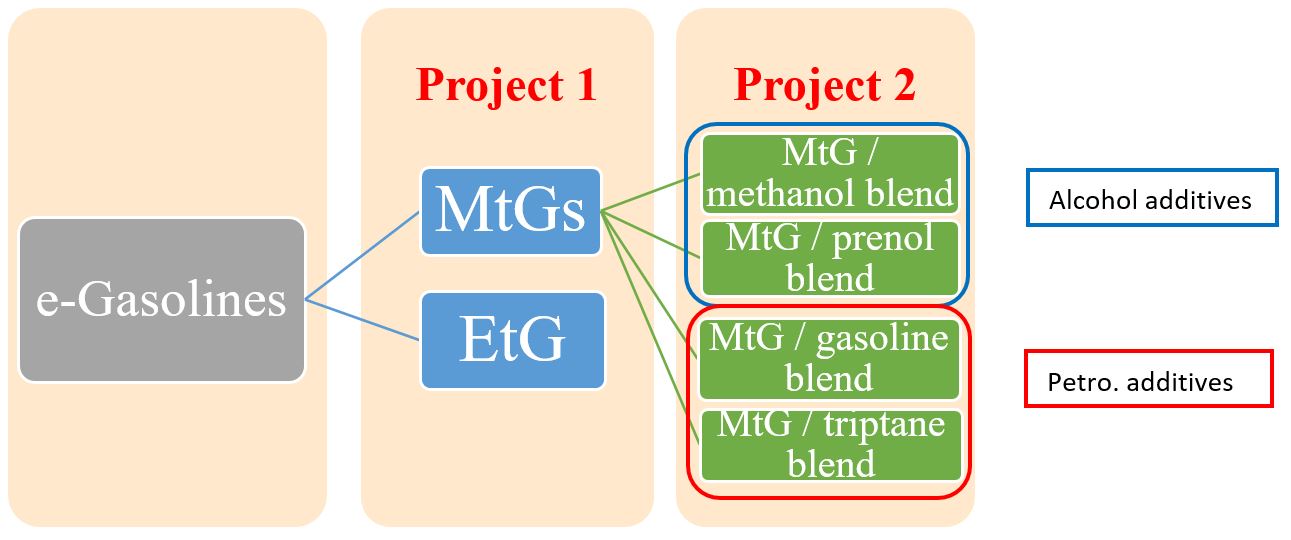
Mr. Khalid Aljohani, Prof. Aamir Farooq
Introduction
The increase in energy demand, together with environmental impacts, calls for alternative energy sources. To support and advance the domestic fuel choices, to increase economic growth, and to reduce the environmental impacts from transportation, non-petroleum-derived gasolines are being projected as satisfactory candidates. The utilisation of e-Gasolines can go a long way towards assisting in decarbonizing the transportation sector. E-gasolines can be produced through low-carbon pathways using diverse or domestic resources coupled with carbon capture, along with electrolysis of water (water-splitting).
Scope of the work
This work will proceed in two directions, with a focus on MtG. The initial step is to explore the reactivity of neat non-petroleum derived fuels (Project #1, see Fig. 1). The comparison of ignition delays of petroleum-derived and non-petroleum-derived gasolines (this work) will also be given. Fig 1 demonstrates the proposed e-fuels composition. The second direction is to examine the reactivity of an improved MtG (Project #2, see Fig. 2). The octane number (ON) of the MtG 35A will be improved via a simple, reliable, and experimentally validated approach, which is via blending (Fig 2 shows the proposed octane-enhancer fuels).

Figure 1: Proposed e-fuels composition
Objective
Methodology:
The reactivity of the proposed e-fuels will be examined through the utilisation of well-known reactors for fuel reactivity investigation: High-Pressure Shock Tube (HPST) and Rapid Compression Machine (RCM). These are used to acquire ignition delays at a certain temperature regime and test time.

Figure 2: Proposed neat e-fuels (Project 1) and MtGs blends (Project 2).
Expected Outcome and Results:
Due to the complexity of gasoline reactivity sensitivity, we have proposed test conditions that will span the entire temperature regime with elevated pressures for each e-fuel/blend, as seen in Fig 3. Kinetic studies on e-gasolines reactivity and its interaction with appropriate additives are of interest for the development of modern internal combustion engines and kinetic gasoline surrogate modelling.

Figure 3: Typical gasoline ignition delay time test range via HPST and RCM facilities.